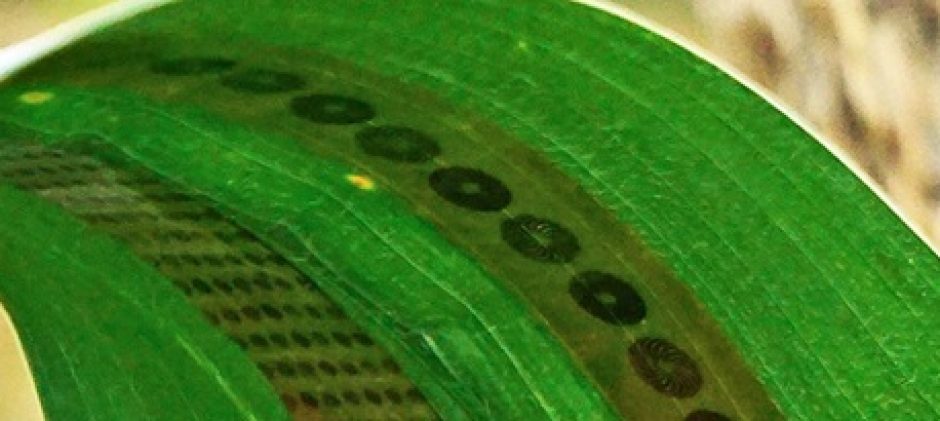- Homepage
- Technology
- Tattoo Sensors: Plants Get Sensor ‘Tattoos’ That Track Water
Tattoo Sensors: Plants Get Sensor ‘Tattoos’ That Track Water

What can a tattoo do? Well it can act as a sensor but not on human beings but on the plants. A plant scientist from Iowa State University has developed Tattoo Sensors on tape, which can be easily attached to plants in order to track their water usage. This looks just like a tattoo which allows researchers and framers to track the water usage data right from the plant to understand and study their behaviour in better light. This will help in discovering the best ways to breed plants which happens to be more water efficient.
Measuring and studying plants in a new way
This researcher has made use of a tiny graphene tattoo sensor in order to make the water measurements possible. This sensor is specifically taped right onto the plants and it has been dubbed as “plant tattoo sensor” by the researchers. The major reason for making use of just an atom thick carbon honeycomb based graphene is that it is great at conducting heat and electricity. In spite of being extremely thing it is strong and stable to hold on its own.
During this research researcher has brought a number of application of graphene such as wearable strain as well as pressure sensors. It was even designed to be included right into the smart gloves which can help in measuring the hand movements.
Instant application and simple manufacturing
Researchers had been able to develop varied kind of sensors utilizing this extremely simple and smart method of patterning using the nanomaterials made up of graphene. Manufacturing flexible tattoo sensors which are cheaper and extremely high performing is possible using just the tape. Researchers had also been successful in coming up with a process of tattoo sensor which allows fabrication of highly intricate grapheme patterns right onto the tape.
In this method patterns are made on the surface of a polymer block through the traditional molding process or simply using the modern 3d printing. After which liquid graphene is placed right onto it which seeps into the indented patterns. Now one tape is used to removing the excess graphene while another strip of tape is applied and pulled away to get the graphene patterns which ultimately results in bringing the tattoo sensors right on the tape.
This very process enables researchers to manufacture highly precise patterns on tape which as thin as 5 millionth of the meter in width. The basic reason behind creating such small patterns is that it aids in increasing the sensitivity of the tattoo sensors. It surprised everyone to note that creating the tattoo sensors just costs few cents and all the credit goes to this simple and effective manufacturing process.
The future application of this sensor is immense as it can be for biomedical diagnostics to checking the building for their structural integrity. It can even be used for testing crops whether they are suffering from any disease or pesticides. But more importantly here the tattoo sensors will help in monitoring and testing water transport in different plants.



